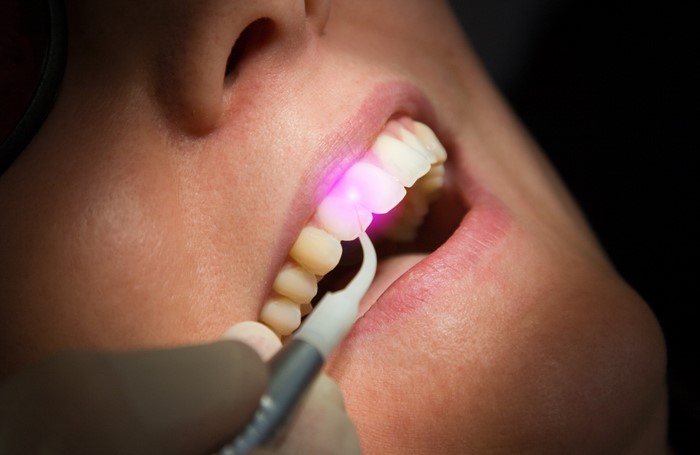The Advantages of Laser Periodontal Therapy for Treating Gum Disease
Laser periodontal therapy, also known as laser gum therapy or laser gum treatment, is an innovative dental procedure that utilizes advanced laser technology to address various gum-related issues. This minimally invasive approach offers a precise and efficient way to treat gum disease, promote gum tissue regeneration, and enhance overall oral health.

Gum disease, also known as periodontal disease, is a prevalent oral health issue that affects millions of people worldwide. It can range from mild gum inflammation (gingivitis) to more severe cases where the supporting structures of the teeth are compromised. Traditional treatment methods for gum disease often involve scaling and root planing, which can be uncomfortable and invasive. However, advances in dental technology have led to the emergence of laser periodontal therapy, a modern approach with numerous advantages over conventional methods. In this article, we will explore the various benefits of laser periodontal therapy for treating gum disease.
1. Minimally Invasive Procedure
Laser periodontal therapy, also known as laser-assisted periodontal therapy (LAPT) or laser gum therapy, is a minimally invasive procedure compared to traditional methods. Conventional treatments often involve manual scraping and scaling of the teeth and roots, which can cause discomfort and sometimes require local anesthesia. In contrast, laser therapy utilizes focused beams of light to target and eliminate bacteria and infected tissue. The precision of lasers allows for more accurate treatment without causing significant trauma to the gums, resulting in reduced pain and faster recovery times.
2. Reduced Discomfort
One of the primary advantages of laser periodontal therapy is the reduced discomfort experienced by patients during and after the procedure. The use of lasers minimizes the need for invasive techniques, such as cutting and suturing of the gums, which are common in traditional approaches. Patients undergoing laser therapy often report less pain, swelling, and bleeding compared to those undergoing conventional treatments. The gentle nature of lasers promotes a more comfortable experience, making it an attractive option for individuals who may be anxious about dental procedures.
3. Precise and Targeted Treatment
Laser technology enables dental professionals to provide precise and targeted treatment for gum disease. The focused light beams can be adjusted to different wavelengths, allowing for customization based on the severity of the condition and the specific needs of the patient. This level of precision ensures that only the infected tissue is targeted while preserving healthy gums and teeth. As a result, laser therapy not only effectively removes bacteria but also promotes faster healing and tissue regeneration.
4. Reduced Risk of Infection
In traditional gum disease treatments, there is a risk of bacterial infection due to the invasive nature of the procedures. Laser periodontal therapy reduces this risk significantly. The intense heat generated by the laser beams has a bactericidal effect, killing bacteria present in the gum pockets and preventing further infection. This advantage is particularly important in cases of advanced periodontal disease where infection control is crucial to halt the progression of the condition.
5. Faster Healing and Recovery
The precise nature of laser therapy contributes to faster healing and recovery times compared to conventional methods. Traditional treatments can lead to tissue trauma and discomfort, which can extend the recovery period. Laser periodontal therapy minimizes tissue damage, allowing patients to heal more quickly and comfortably. Additionally, lasers stimulate blood flow and promote tissue regeneration, aiding in the healing process.
6. Less Post-Operative Sensitivity
Post-operative sensitivity is a common concern after gum disease treatment. However, laser therapy minimizes this issue due to its non-invasive approach. Traditional treatments can expose the tooth roots, leading to heightened sensitivity to hot and cold temperatures. Laser therapy reduces the risk of gum recession and root exposure, resulting in less post-operative sensitivity and discomfort.
7. Preservation of Healthy Tissue
Preserving healthy tissue is paramount in gum disease treatment. Laser periodontal therapy excels in this aspect by selectively targeting infected areas without damaging surrounding healthy tissue. This precision is difficult to achieve with traditional methods, which often involve manual scraping that can inadvertently remove healthy tissue. By maintaining the integrity of the gums, laser therapy contributes to better overall oral health.
8. Minimized Bleeding
Bleeding gums are a common symptom of gum disease and can exacerbate during traditional treatments. Laser periodontal therapy reduces bleeding during and after the procedure. The laser’s coagulating effect seals blood vessels as it removes infected tissue, minimizing bleeding and ensuring a cleaner surgical field for the dentist to work on.
9. Improved Aesthetic Outcomes
In addition to its health benefits, laser periodontal therapy can lead to improved aesthetic outcomes. Gum disease can cause gums to recede, creating an uneven and less appealing smile. Laser therapy promotes tissue regeneration and can stimulate the growth of new, healthy gum tissue. This can lead to a more attractive and symmetrical gum line, enhancing the overall appearance of the smile.
Laser periodontal therapy offers a revolutionary approach to treating gum disease, providing numerous advantages over traditional methods. Its minimally invasive nature, reduced discomfort, precise treatment, and faster recovery times make it an appealing option for individuals seeking effective gum disease treatment. With its ability to target infected tissue while preserving healthy areas, laser therapy not only addresses oral health concerns but also contributes to improved aesthetic outcomes. As technology continues to advance, laser periodontal therapy is poised to play a pivotal role in shaping the future of gum disease treatment, offering patients a more comfortable, efficient, and effective solution.